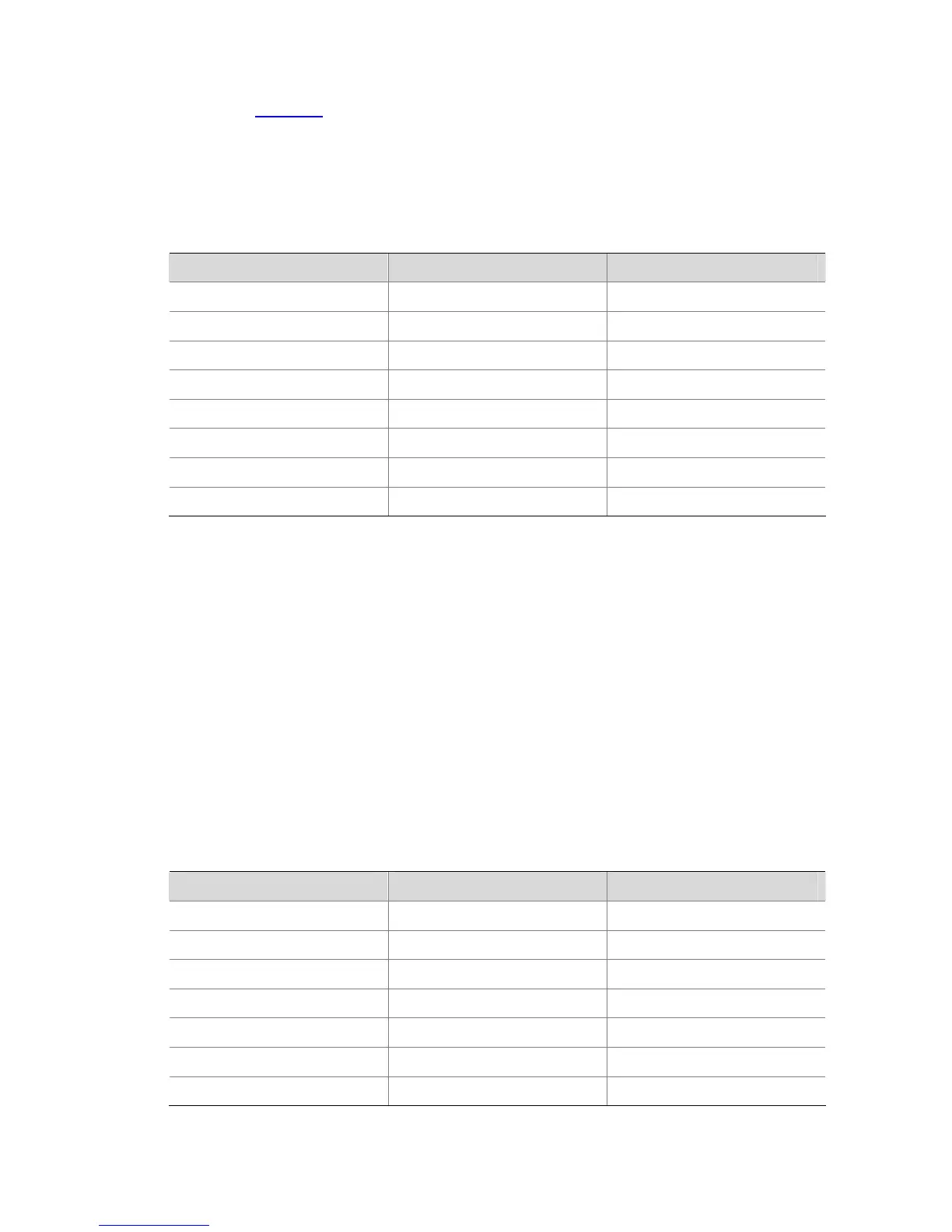1-5
As shown in Figure 1-3, the ToS field of the IP header contains eight bits: the first three bits (0 to 2)
represent IP precedence from 0 to 7; the subsequent four bits (3 to 6) represent a ToS value from 0 to 15.
According to RFC 2474, the ToS field of the IP header is redefined as the differentiated services (DS)
field, where a DSCP value is represented by the first six bits (0 to 5) and is in the range 0 to 63. The
remaining two bits (6 and 7) are reserved.
Table 1-1 Description on IP Precedence
IP Precedence (decimal) IP Precedence (binary) Description
0 000 Routine
1 001 priority
2 010 immediate
3 011 flash
4 100 flash-override
5 101 critical
6 110 internet
7 111 network
In a network in the Diff-Serve model, traffic is grouped into the following four classes, and packets are
processed according to their DSCP values.
z Expedited Forwarding (EF) class: In this class, packets are forwarded regardless of link share of
other traffic. The class is suitable for preferential services requiring low delay, low packet loss, low
jitter, and high bandwidth.
z Assured forwarding (AF) class: This class is divided into four subclasses (AF 1 to AF 4), each
containing three drop priorities for more granular classification. The QoS level of the AF class is
lower than that of the EF class.
z Class selector (CS) class: This class is derived from the IP ToS field and includes eight subclasses;
z Best effort (BE) class: This class is a special CS class that does not provide any assurance. AF
traffic exceeding the limit is degraded to the BE class. Currently, all IP network traffic belongs to
this class by default.
Table 1-2 Description on DSCP values
DSCP value (decimal) DSCP value (binary) Description
46 101110 ef
10 001010 af11
12 001100 af12
14 001110 af13
18 010010 af21
20 010100 af22
22 010110 af23

